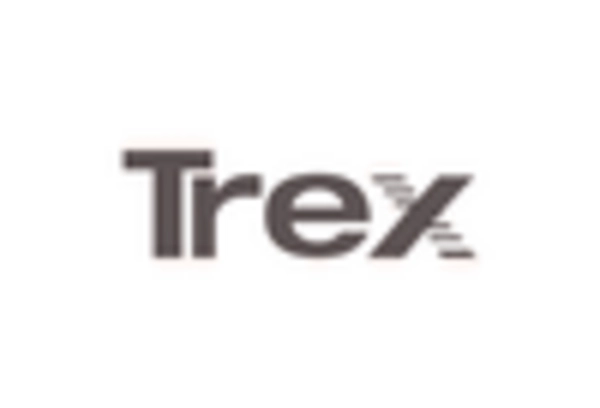Market Trends
Key Emerging Trends in the Wooden Decking Market
Recent developments in the wooden deck industry reflect changing consumer tastes, technology as well as ecological issues. One such trend is an increase in sustainable or eco-friendly decks. FSC-certified hardwoods together with recycled composite decks have come into play for providing sustainable alternatives.
Another significant trend in this sector is low-maintenance decks. Homeowners and businesses alike prefer weather resistant deck materials that don’t require maintenance. Composite decks are popular because they last long without being attacked by pests or rotting as well as being maintained easily. With most people leading busy lives these days, the need for constant attention to outdoor spaces translates into a desire for alternative decking options that do not require ongoing care. Digital marketing has revolutionized the wooden deck sector too. Through online platforms or e-commerce merchants can advertise their products, reach more customers and facilitate transaction process. This has empowered customers who can now research different types of decking materials online before making a purchase decision. The traditional marketing practices employed by wooden deck companies have changed as a result of this shift to digital involvement.
Hardwood deck business is influenced by environmental awareness, technology changes, customer behaviour as well as external effects such as Covid-19 outbreak. As such market dynamics are changing due to the need for sustainable options at low maintenance levels; with improvements in design in addition to technology requirements among others. Wooden decks businesses will likely focus on meeting aesthetic needs that matter most on these customers since outdoor living is trending currently. Henceforth it would be important f or manufacturers as well as retailers to have an online presence and embrace ecommerce if they are to succeed in this rapidly changing market because there is a digital revolution in the industry. In addition to that new technical development has also driven the evolution of wooden deck products lines based on both designs including technology principles like surface treatments while considering them aesthetically pleasing among others. For instance, manufacturers continue to incorporate innovative surface finishes, concealed fasteners and adjustable design options for their products. These developments enhance the performance and longevity of decking materials as well as its aesthetics. More popular are decking boards that look and feel like real wood but are more durable and resistant to weather.










Leave a Comment